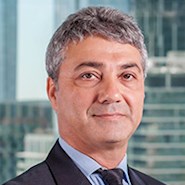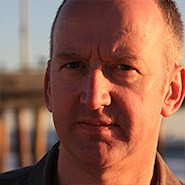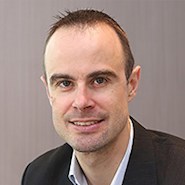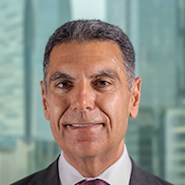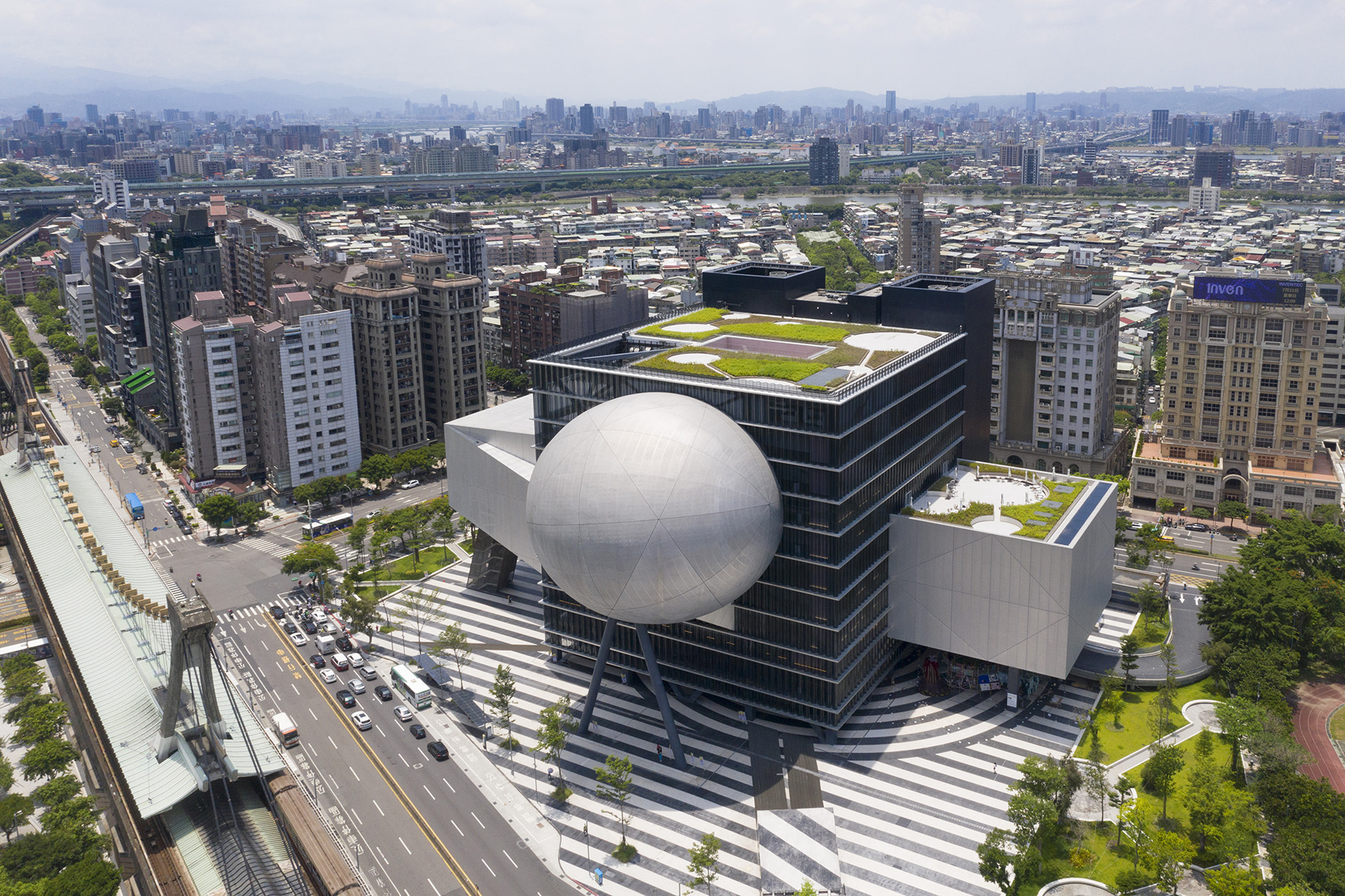
By Huseyin Darama, Ph.D., P.E., S.E., F.ASCE, Rory McGowan, MIStructE, FIEI, Chas Pope, MIStructE, MICE, CEng, and Atila Zekioglu, P.E., S.E., M.ASCE
The Taipei Performing Arts Center in Taiwan is the culmination of a multidisciplinary, decadelong effort. The design team succeeded in creating a seismically resilient structure that is also innovative in form and function.
Aiming to foster the development of arts and culture, the Taipei City Government Department of Cultural Affairs commissioned a series of arts and cultural projects across Taiwan, with the Taipei Performing Arts Center as its most recent endeavor. The winning design, developed by the Office for Metropolitan Architecture with support from Arup, was selected from a total of 135 entries from 24 countries at the climax of a two-stage international design competition held in 2008.
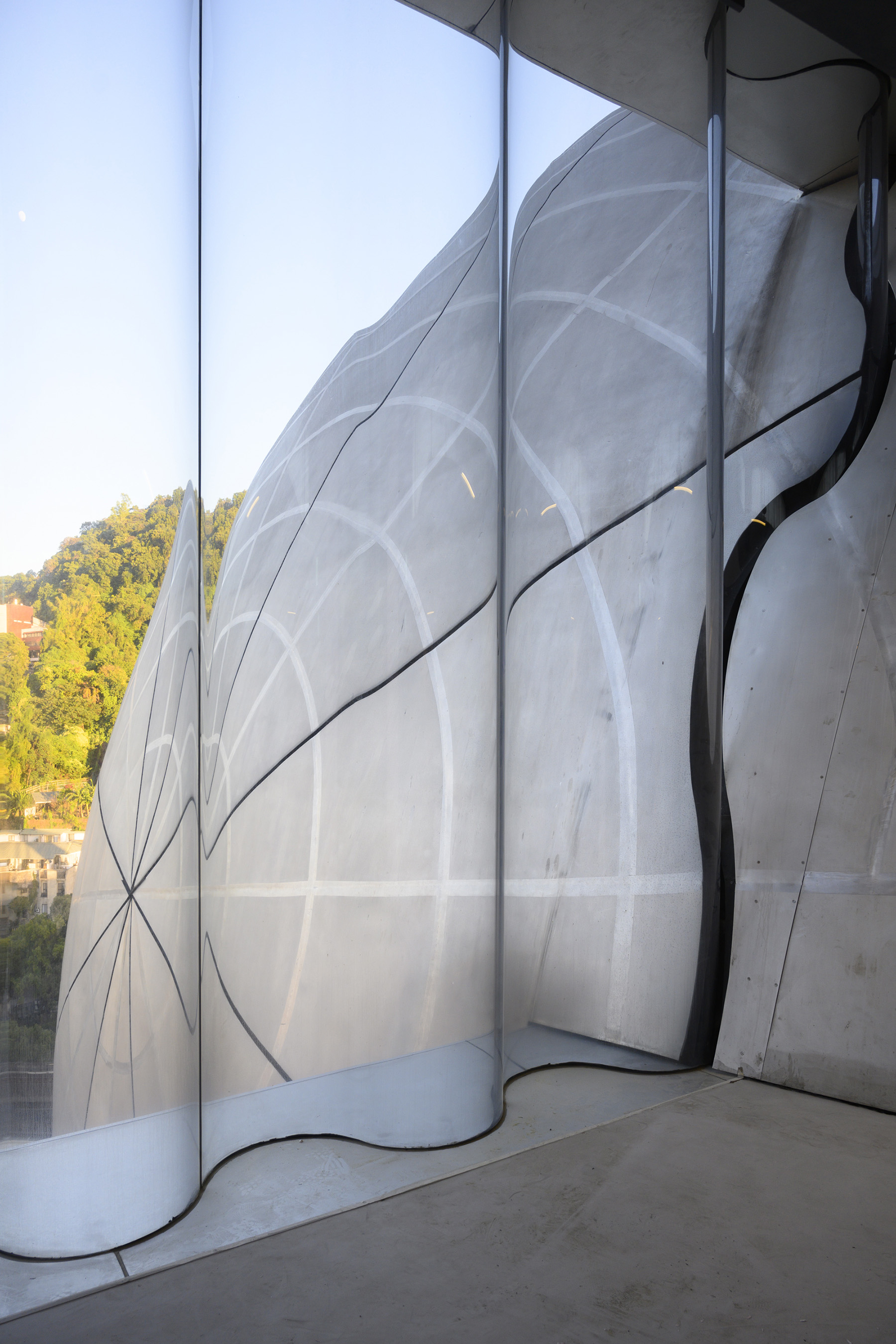
The project broke ground in 2012, and the grand opening was held in August, marking the conclusion of a complex 10-year construction timeline.
The TPAC is in Taipei’s Shilin District, near its famous Shilin Night Market and the Jiantan transit station. The 58,000 sq m complex includes three theaters — the Grand Theater (1,500 seats), the Blue Box multiform theater (800 seats), and the Globe Playhouse (800 seats) — that “plug” into the southern, northern, and eastern faces, respectively, of a 12-story, 55 m tall central cube.
The steel-fabricated cube houses backstage facilities, lobbies, offices, rehearsal rooms, and workshop spaces for the theaters. The western face features four towers housing elevators, administrative offices, and other back-of-house operations.
A unique aspect of the theaters is that they can be used independently or, in the case of the Grand and Blue Box theaters, can be combined into what has been dubbed the Super Theater, a design that accommodates a range of performance types from classical Chinese opera to modern dance to rock concerts. The dynamic arrangement of stage and seating includes a public circulation route that exposes sections of the backstage to the public.
Each theater is supported by columns that elevate the space by 10-22 m, and the Grand and Blue Box theaters project as much as 37 m from the cube’s sides. The auditoriums for these two theaters feature rectangular, boxlike forms. However, the TPAC’s most striking design element is perhaps the Globe Playhouse, which is an almost spherical auditorium, housed within a skin comprising an inner and outer shell.
The playhouse projects 26 m from the cube between levels 5 and 12 and is formed primarily via a 3D space truss composed of interlinked subcomponent trusses. This form creates a uniquely shaped proscenium for experimental stage framing, while the 3D steel structure that links the shells is framed around circulation spaces that bring visitors up to the auditorium.
Due to the playhouse’s complicated geometry, Arup coordinated closely with the architects, employing a 3D model in Rhino to visualize and then design and coordinate the spaces from the earliest design stages.
Multifunction goals
Taiwan has a history of earthquakes, therefore, seismic performance was at the forefront of the Taipei government’s priorities for the center, as it hoped to keep critical infrastructure operational after a major earthquake. In the event of such an earthquake, the TPAC can convert into a refuge, as the building’s hospital-level seismic performance permits immediate occupancy, enabling it to disseminate postdisaster management communications and become a recovery center.
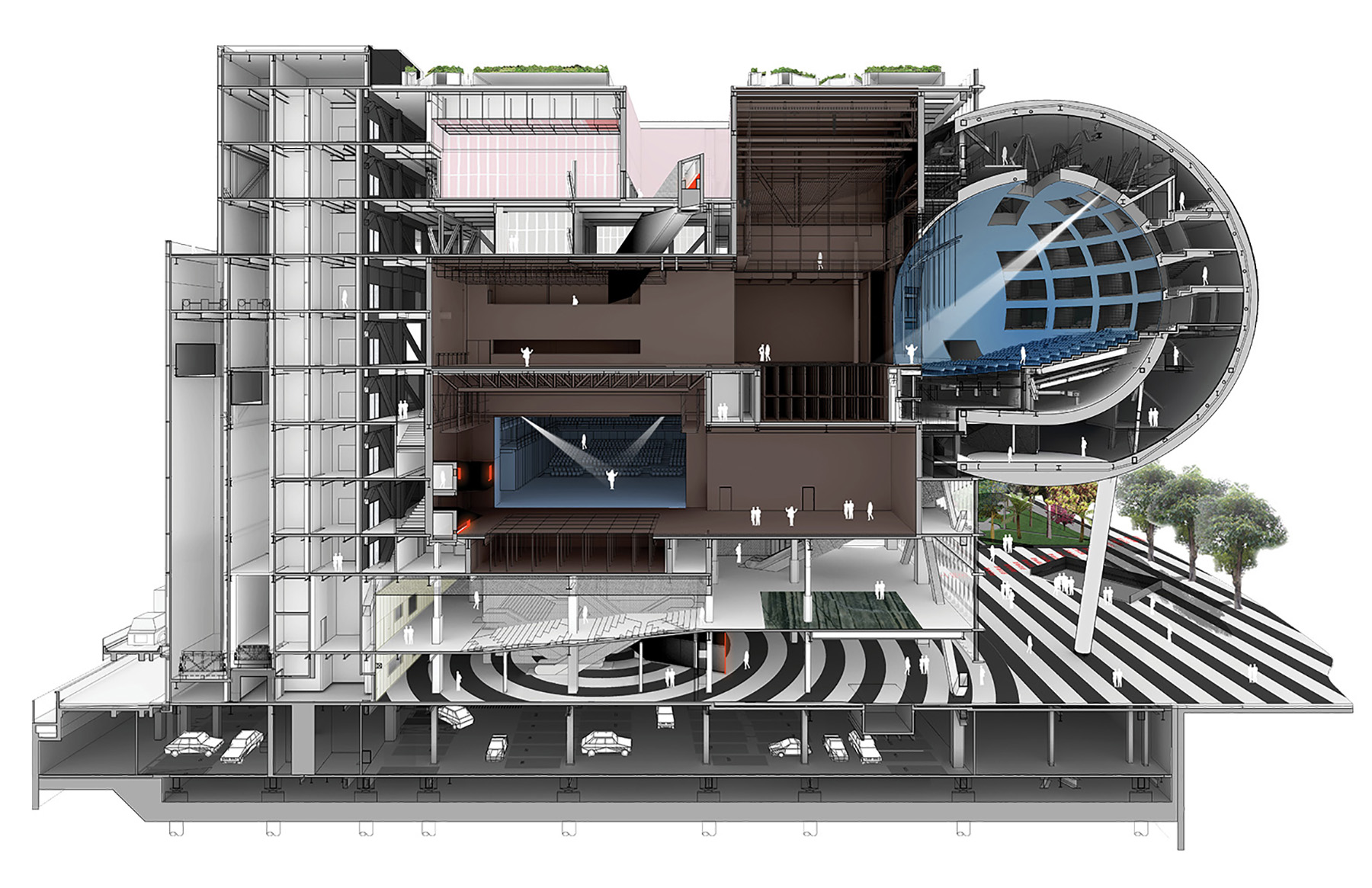
The intricate architectural design and the site-specific seismic hazards posed unique difficulties in realizing OMA’s architectural vision for an innovative yet seismically resilient structure. Partnering with OMA and local structural consultant Evergreen Consulting Engineering Inc., Arup was tasked with solving these problems via structural, building physics, fire, and building services engineering.
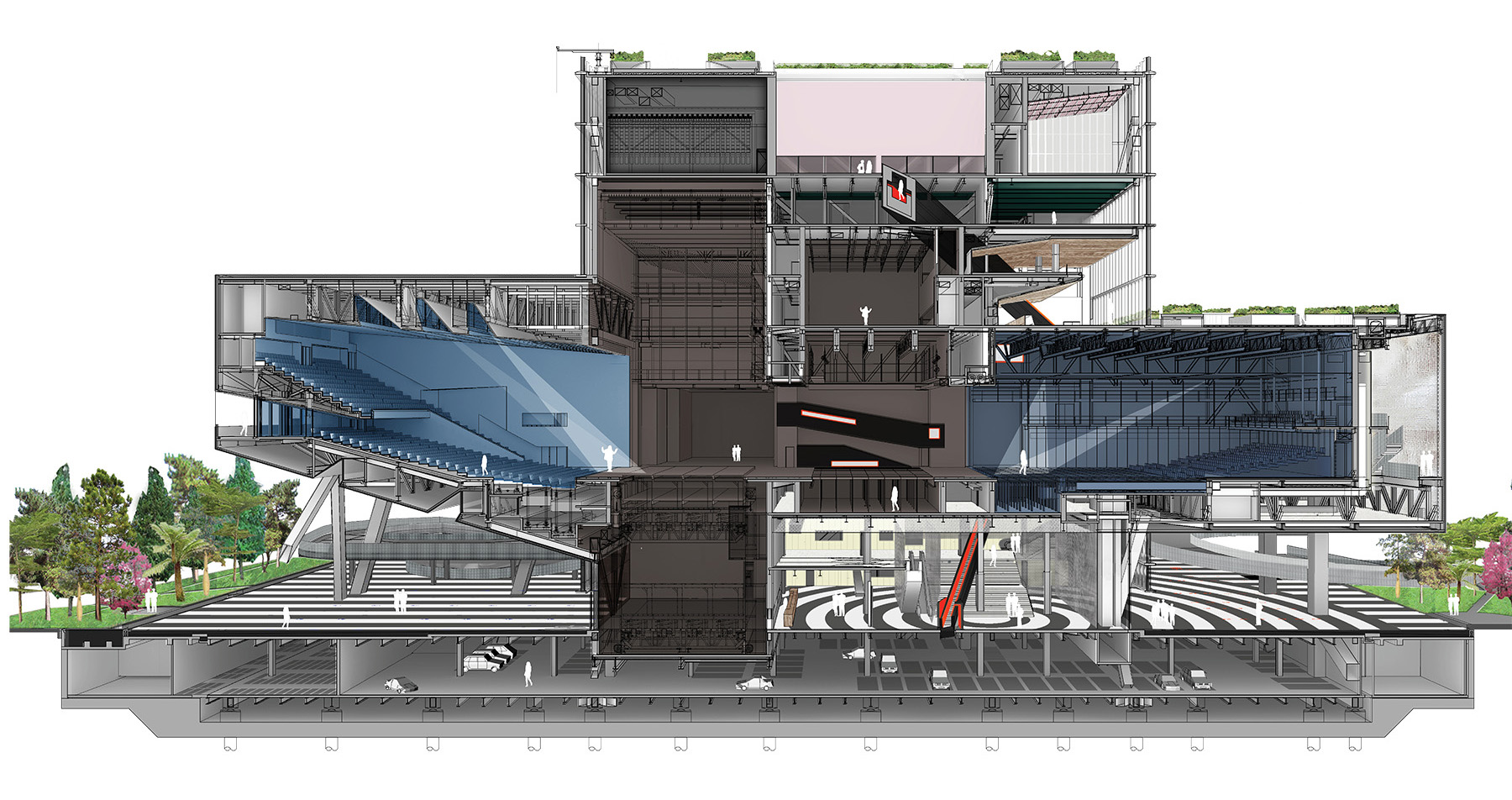
Arup led the engineering design for each discipline, from planning services and scheme design through the preliminary design phases (with the exception of building services, which was schematic design only). Evergreen subsequently took the lead for structural engineering, lending its expertise to ensure compliance with Taiwanese building codes and liaising with local authorities.
Designing for seismic resilience
Arup initiated a performance-based design framework with the Department of Cultural Affairs in order to fulfill the design targets for seismic resilience. Based on the government’s requirements for the structure to be a postquake facility and achieve hospital-level performance, the design team defined two major seismic performance objectives:
- Structural “operational” seismic performance for an earthquake hazard with a uniform 10% probability of exceedance in 50 years (475-year event), commonly known as design basis earthquake. Under this scenario, all structural elements are required to remain elastic.
- Structural “immediate occupancy” seismic performance for an earthquake hazard with a uniform 2% probability of exceedance in 50 years (2,475-year event), known as maximum considered earthquake. Under this scenario, the substructure and the transfer and isolator elements are required to remain elastic, while the superstructure is permitted to experience limited inelastic deformations.
First, the Arup team used the faces of the central cube for the primary bracing structure. Placing the diagonal seismic braces around the perimeter of the superstructure (braced box) not only allows for the stability system to be in the optimal location, because it maximizes lateral and torsional stiffness to resist high seismic forces, but it also carries almost all the building’s lateral loads and much of the gravitational forces.
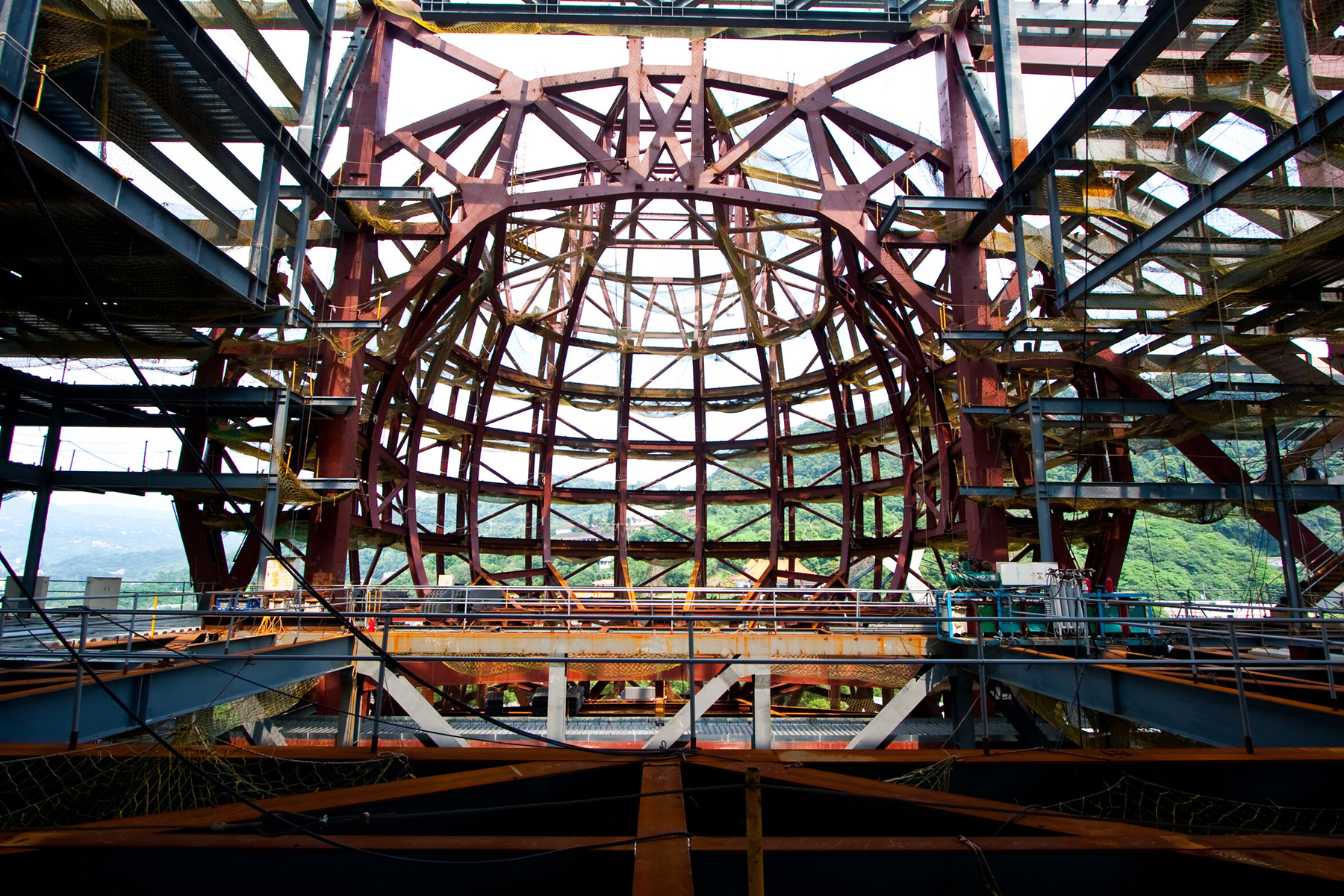
This arrangement made the TPAC’s large internal interwoven volumes possible. The columns supporting the projecting theaters are also braced to enhance overall lateral resisting performance.
To satisfy the seismic performance goals, Arup base isolated the entire superstructure because that was the most efficient way to achieve essentially all-elastic behavior for the described DBE scenarios, given the intricate building design and mass distribution of weight. Due to the building’s irregularity, as well as its demanding performance requirements, the design team chose friction pendulum-type isolators because of their reliable fundamental period-shifting characteristics (set by the radius of the isolators), which efficiently eliminate undesired structural torsonial response.
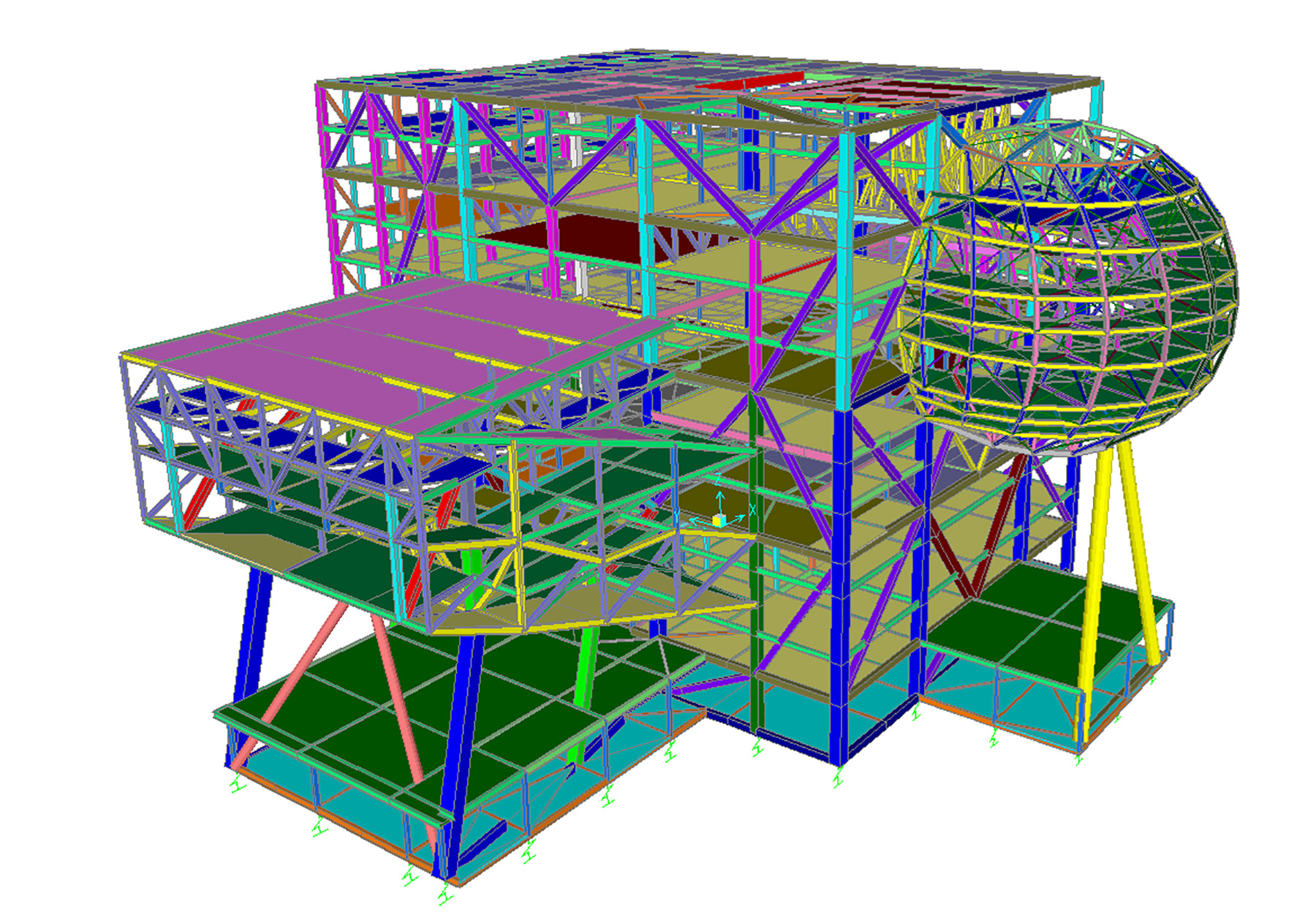
These isolators enable a more flexible superstructure that attracts significantly reduced seismic forces during an earthquake, and their mass and friction-based structural stiffness characteristics result in alignment with the center of mass at the isolation plane. The isolation plane, a key feature of the TPAC, is at the basement level to avoid conflicts with stage pits, elevators, and other theater elements.
Compared with conventional solutions, base isolation reduced the seismic superstructure design forces by more than 60% and significantly reduced the interstory seismic drift and the in-floor accelerations. As a result, the superstructure has more efficient and lighter steel elements with simpler connections. With this design choice, the likelihood of damage to nonstructural components is diminished because they are subjected to reduced accelerations and displacements.
The additional cost of the isolators was offset by the savings realized from the building’s seismic-resisting steel structural system, projected maintenance costs, and repair expenses when the expected cost of seismic-related repairs to a nonisolated building over its lifetime were taken into account.
The base isolators work in conjunction with the robust superstructure to maximize the building’s seismic performance, given the challenging site location and existing conditions. (The TPAC is built on an old riverbed on fill material that overlays multiple layers of silty clay and sand, with bedrock not reached until depths that extend as much as 45 m below grade.)
The TPAC is the first base-isolated building in the region that employs friction-pendulum technology; 89 bearings carry its isolated weight of approximately 64,000 metric tons. With a new understanding of the benefits of base isolation, the technology has since been implemented in other projects in Taiwan.
Seismic analysis
To ensure that the design and seismic resilience would be attainable, the Arup team conducted extensive earthquake scenario-driven analyses during various phases of the design process. In the preliminary phase, the design team performed a site-specific seismic hazard study based on the parameters of the local building code for Taiwan’s District 2.
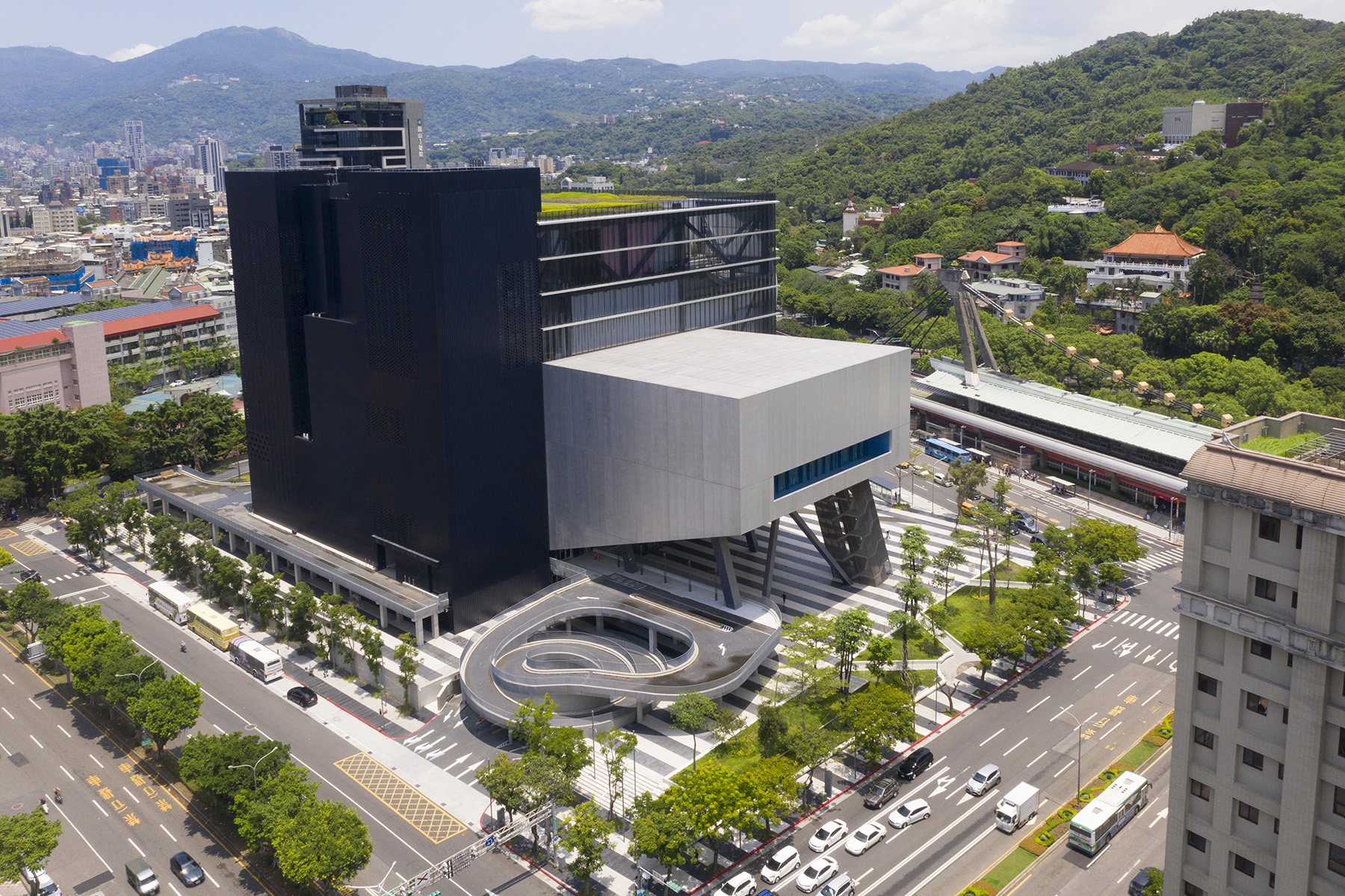
The study used data from two notable earthquake events — the 1999 magnitude 7.3 Chi-Chi Earthquake and the 2002 magnitude 6.8 Taiwan Earthquake — in addition to data from four observing stations near the TPAC site to find the MCE and DBE response spectrums and ground-acceleration time histories.
The team also performed equivalent lateral force, response spectrum, and nonlinear time history analyses. The results from each analysis were compared to verify the overall calculations. The equivalent lateral force procedure was used for preliminary analysis and basic comparison purposes, and it estimated the total base shear and maximum isolator displacements efficiently.
The response spectrum analysis informed the structural design and compliance with Taiwan’s building code. ASCE 7 standards were combined with Taiwan’s specifications for the linear dynamic response spectrum analysis.
For the isolators and the building performance evaluation, the design team conducted nonlinear time history analyses as a verification (stability) over and above Taiwan’s code requirements. This study applied eight time history records in addition to analytical modeling of the isolators and implementation of isolator nonlinearity (including upper- and lower-bound properties) to determine the structural responses, such as maximum isolator displacements and shears, as well as structural member performance evaluation and stability checks of the system for the MCE hazard.
The results of the analyses revealed that the building will experience a base shear of 11% seismic weight under the DBE scenario. Additionally, the base shear will be approximately 16% of the seismic weight in the MCE scenario. The maximum predicted isolator displacement in the MCE scenario is 660 mm — less than the isolator allowable limit of 700 mm (onset of the stiffening branch of force-displacement curve). A moat around the building is detailed to accommodate these movements.
From these results, the team determined that the base-isolated building either meets or surpasses the project’s seismic performance objectives, resulting in a seismically resilient structure aligned with OMA’s design vision.
Elevating the audience experience
A coordinated and detailed multidisciplinary approach was a fundamental component of the TPAC’s construction, with each discipline (structural, building physics, fire, and building services) striving to successfully realize an iconic cultural landmark.
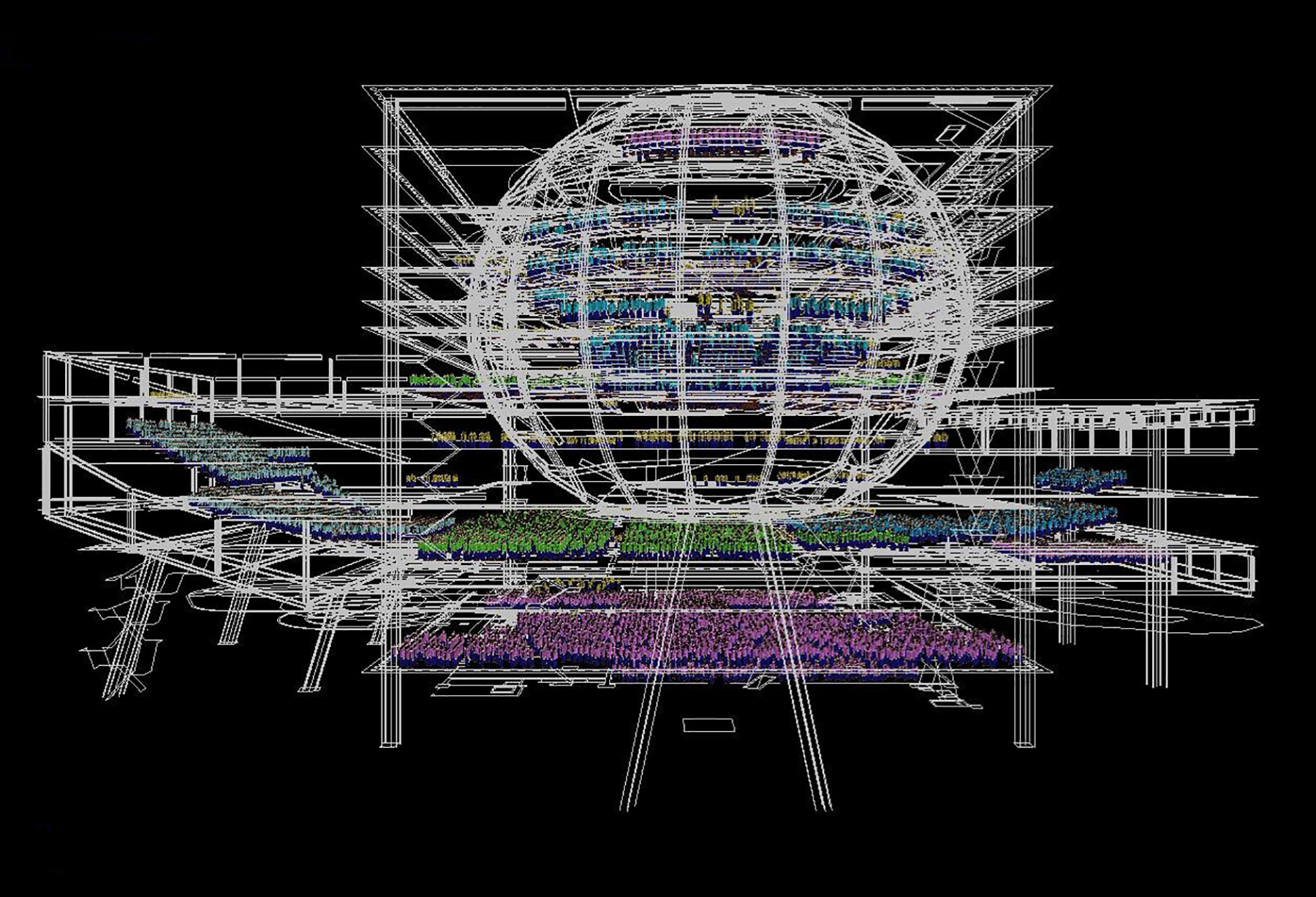
Constructing the Super Theater was the greatest multidisciplinary design hurdle. Its myriad stage and seating layouts made it challenging — but not impossible — to comply with the requirements of the local prescriptive fire code. Fire engineering analyses revealed that the building could be evacuated safely in the event of a fire without having to enclose the central stage area with fire curtains.
Additionally, by using a phased evacuation strategy — validated by a whole-building evacuation simulation — it was possible to safely reduce the number and width of escape staircases, enabling the team to create a more open and integrated space within the building and optimize the seating arrangements. These solutions provide more revenue for the client, facilitate a more flexible architectural design, and do not compromise safety.
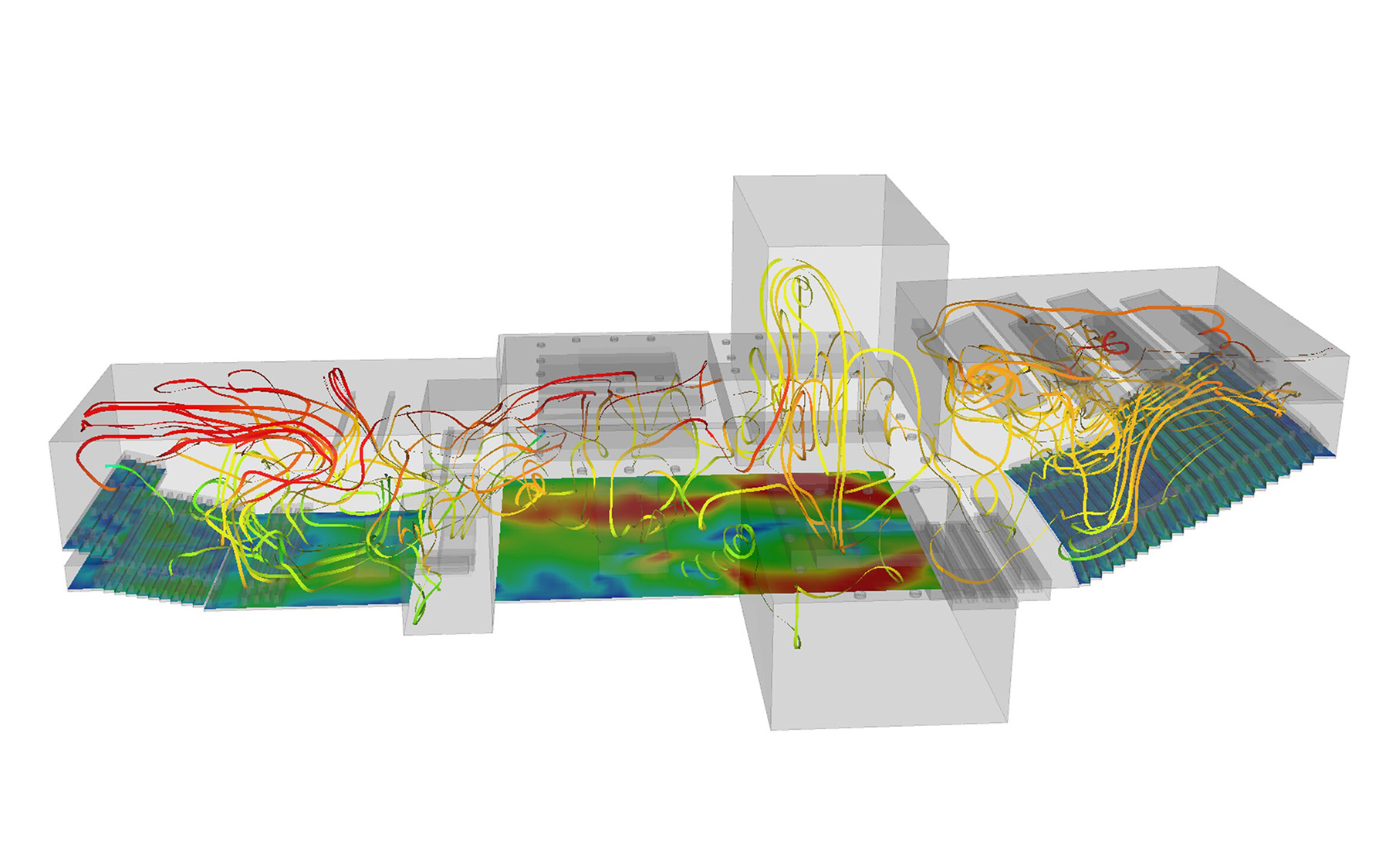
To create a comfortable atmosphere, building physics engineers conducted extensive computational fluid dynamics analyses to assess airflow through the auditoriums and stage areas. They determined that fast air movements could provide improved cooling but would risk movement of stage curtains, props, and even theatrical smoke effects. After studying the results, the engineers chose to ventilate the auditoria via an under-floor displacement system, delivering thermal comfort with optimal acoustic and energy performance. Cool air is supplied through under-seat swirl diffusers via an air plenum, and separate, constant volume systems provide air to various stages and wings, enabling them to be used separately or together.
Raising standards for future developments
The design team was committed to minimizing the TPAC’s embodied carbon emissions for the lifetime of the building. The compact design and optimized floor area bring a number of immediate advantages to sustainable operations such as passive design, energy efficiency, reduction of the structural shell tonnage, and self-shading.
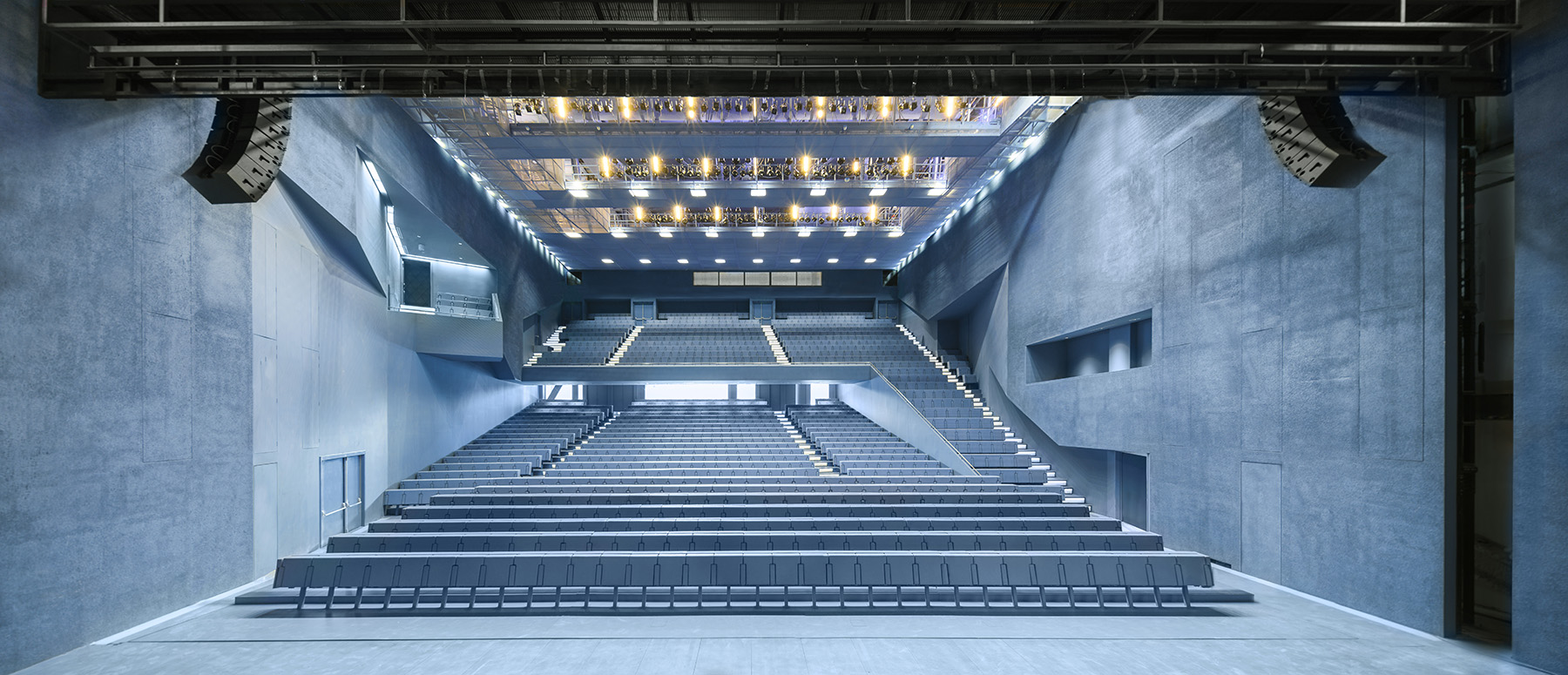 © Shephotoerd Co. Photography, courtesy of OMA
© Shephotoerd Co. Photography, courtesy of OMA The TPAC’s advanced seismic resiliency, versatility, sustainability impact, and ability to engage with the community make it a major achievement for Taiwan. The innovative solutions incorporated into the design can be adapted and used as a framework for future developments, setting new building standards for the region.
Huseyin Darama, Ph.D., P.E., S.E., F.ASCE, is an associate in Arup’s Los Angeles office. Rory McGowan, MIStructE, FIEI, is an Arup Fellow and a director in Arup’s Dublin office. Chas Pope, MIStructE, MICE, CEng, is an associate principal in Arup’s Singapore office. Atila Zekioglu, P.E., S.E., M.ASCE, was a principal and seismic leader in Arup’s Los Angeles office.
Selected project credits
Owner: Taipei City Government Executive Departments: Department of Cultural Affairs, Department of Rapid Transit Systems (first district project office), and Public Works Department (new construction office)
Architect: OMA, Rotterdam, Netherlands
Architect of record: KRIS YAO | ARTECH, Taipei, Taiwan
Theater consultants: dUCKS Scéno, Villeurbanne, France; Creative Solution Integration Ltd., Taipei
Acoustic consultant: Royal HaskoningDHV, Eindhoven, Netherlands
Structure; seismic; mechanical, electrical, and plumbing; building physics; and fire engineer: Arup, Beijing, Hong Kong, and Los Angeles offices
Fire engineer: Taiwan Fire Safety Consulting Ltd., Taiwan
Structural engineer (construction documents): Evergreen Consulting Engineering Inc., Taipei
Building services engineer (detailed design): Heng Kai Inc., Taipei; IS Lin and Associates Engineers, Taipei
Sustainability consultant: Segreene Sustainable Design & Consulting, Taipei
Geotechnical engineer: Sino Geotech, Taipei
This article first appeared in the January/February 2023 issue of Civil Engineering as “Form and Function.”



